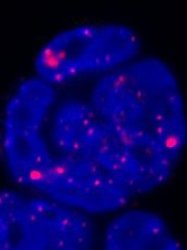BibTex format
@article{Novo:2022:10.1038/s41467-022-31198-3,
author = {Novo, CL and Wong, E and Hockings, C and Poudel, C and Sheekey, E and Wiese, M and Okkenhaug, H and Boulton, SJ and Basu, S and Walker, S and Schierle, GSK and Narlikar, GJ and Rugg-Gunn, PJ},
doi = {10.1038/s41467-022-31198-3},
journal = {Nature Communications},
pages = {1--16},
title = {Satellite repeat transcripts modulate heterochromatin condensates and safeguard chromosome stability in mouse embryonic stem cells},
url = {http://dx.doi.org/10.1038/s41467-022-31198-3},
volume = {13},
year = {2022}
}

